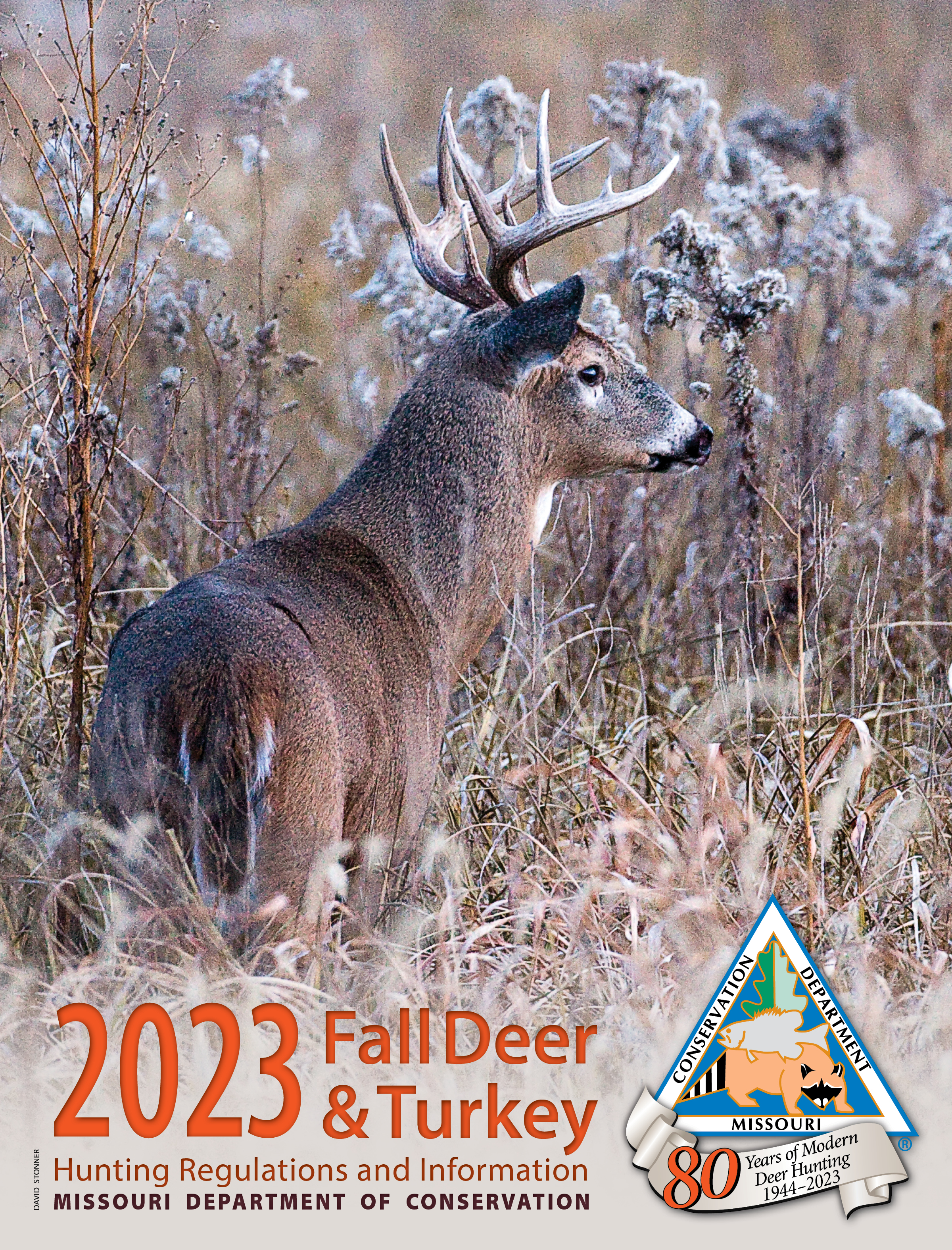Firearms
What rifle should the beginner use? That depends. How good a shot are you? Can you take the recoil of a large-caliber rifle? Are you going to use the gun just for deer hunting? Are you going to hunt deer in Missouri only?
Title
Shotguns
If finances are a concern, consider a shotgun. A slug is very effective at short range; about 5 percent of our deer harvest is taken with slugs. Most deer in Missouri are killed at less than 100 yards, the effective range of a shotgun slug.
Most shotguns do not have adequate sights for accurate aiming, at even 50 yards. A deer’s chest area presents about a 12-inch target, so you have to aim with better accuracy than a shot pattern. Rifle-type sights for shotguns are available from several after-market companies and many manufacturers offer special rifled-slug barrels for their shotguns; most allow for mounting a scope.
Title
Deer Rifles
The best deer rifle is the one that you can shoot best. There are lots of stories about the power of big-game rifles, and most of these big guns are vastly overrated. A well-placed bullet of adequate weight and velocity will put a deer down to stay, and a poorly placed bullet, no matter how large, is the first step toward a wounded, lost animal. No high-powered cartridge is a substitute for good, accurate shooting.
In recent years, most deer hunters have chosen rifles in the .243, 6mm, .270, .30-.30, .308 and .30-06 class. These cartridges develop relatively light recoil, which makes them fairly easy to shoot accurately.
Whatever rifle you choose, try it out before deer season. Sight it in, and fire enough rounds on the shooting range to become accustomed to the recoil, the muzzle blast, and the handling characteristics.
Title
Scopes
Because of its light-gathering qualities, a good scope is a distinct advantage in dim light. For Missouri conditions, a 3-9 power scope is an excellent addition to a deer-hunting rifle, especially for the beginner or older hunter whose eyes may have trouble adjusting to open or peep sights.
Clothing and other equipment
Proper equipment will make your hunt more enjoyable and help you bag your deer. Advance preparation will certainly make the chore of field dressing and handling a deer much easier.
Title
Dress in Layers, and Wear Blaze Orange
Choose comfortable layers that will keep you warm in the pre-dawn chill but allow you to peel down in the heat of the midday sun.
Regulations require you to wear a hat and shirt, vest, or coat of blaze orange during firearms deer season so that the color is plainly visible from all sides. Camouflage orange does not satisfy this requirement. Read more about the requirements for wearing hunter orange.
Title
Wear Sturdy, Warm Boots
Get boots that will allow you to walk comfortably and safely over rough country and still be warm while sitting in cold weather. Insulated rubber boots or felt pads work well.
Title
Field-Dressing Tools
A deer can be field dressed with a sharp pocketknife, but the job is easier with a sharp, stout knife having a straight, relatively thin, 4- to 6-inch blade with a dropped point.
A saw or light hand ax and sledgehammer also are handy for splitting the pelvic girdle and chest cavity.
Title
Other Helpful Items
- Raincoat or poncho for rainy weather or as a windbreak on a stand
- Flashlight for finding your stand in pre-dawn darkness
- Compass or global positioning system for locating stands and navigating in the woods
- 15-foot length of stout rope for dragging a deer, hoisting your unloaded rifle into a tree stand, or for emergencies
- Latex or rubber gloves to protect your hands while field-dressing a deer
- Binoculars, which are especially important if you are hunting areas with special regulations, such as an antler-point restriction
- Small backpack or belt pack to carry your lunch, gear, and extra clothing — leaving both hands free for handling the rifle






















